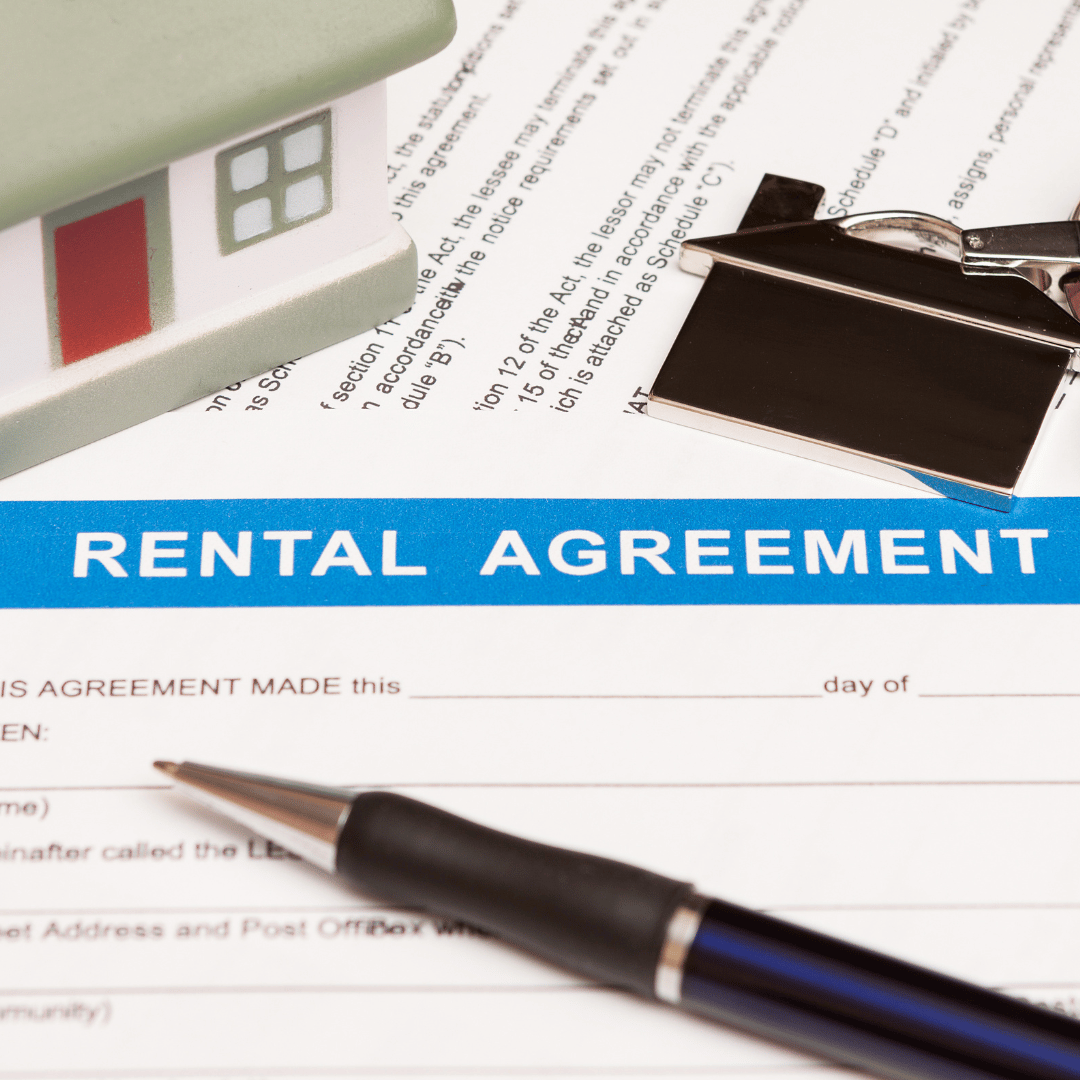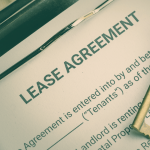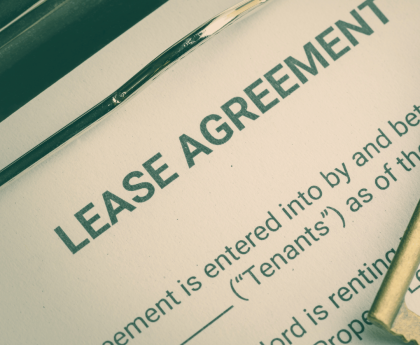Understanding Lease Deed for Commercial Properties: Format, Agreements, and Legal Considerations
Commercial Property Rental Agreement-Leasing commercial property is a common practice in the world of business. Whether you’re a landlord looking to rent out your property or a business owner seeking premises for your operations, a solid understanding of lease deeds, rental agreements, and the associated legal complexities is crucial. In this comprehensive guide, we will delve into the format of lease deeds for commercial properties, the significance of commercial property rental agreements, the benefits they offer, how to draft them effectively, potential legal complications, and provide a sample format for reference.
What is a Lease Deed for Commercial Property?
A lease deed for commercial property, often referred to as a commercial lease agreement or rental agreement, is a legally binding contract between a landlord (lessor) and a tenant (lessee) outlining the terms and conditions governing the rental of commercial space. This document delineates the rights, responsibilities, and obligations of both parties during the lease period.
Components of a Commercial Property Rental Agreement:
Parties Involved:
- Landlord (Lessor): The property owner who grants the lease.
- Tenant (Lessee): The individual or entity renting the commercial space.
Property Details:
- Description of the leased premises, including the address, unit number, and any specific details about the space.
Lease Term:
- Duration of the lease, including start and end dates, renewal options, and provisions for early termination.
Rent and Payment Terms:
- Amount of rent, payment frequency (monthly, quarterly, etc.), accepted payment methods, and any provisions for rent escalation.
Security Deposit:
- Amount of security deposit required, conditions for its return, and permitted uses by the landlord.
Maintenance and Repairs:
- Responsibilities for property maintenance, repairs, and alterations, including who is responsible for costs and the procedure for requesting repairs.
Permitted Use:
- Details regarding the approved uses of the premises, any restrictions, and provisions for subleasing or assignment.
Insurance and Indemnity:
- Requirements for insurance coverage, liability, and indemnification in case of damage or injury on the premises.
Default and Remedies:
- Actions to be taken in the event of lease violations, including notice periods, penalties, and remedies such as eviction or lease termination.
Governing Law and Dispute Resolution:
- Specification of the governing jurisdiction, dispute resolution mechanisms (arbitration, mediation, etc.), and procedures for legal proceedings.
Benefits of Commercial Property Rental Agreement:
- Legal Protection: A well-drafted lease agreement protects the interests of both parties and helps resolve disputes through clear terms and provisions.
- Financial Security: Establishing rent amounts, payment schedules, and security deposit requirements provides financial stability for landlords and tenants.
- Clarity of Responsibilities: Clearly outlining maintenance, repair, and alteration responsibilities reduces misunderstandings and potential conflicts.
- Flexibility: Lease agreements can be tailored to accommodate specific business needs, including options for expansion, renovation, or subleasing.
- Stability and Predictability: Defined lease terms and renewal options provide stability for both parties, allowing for long-term planning and investment.
How to Draft a Commercial Property Rental Agreement:
Drafting a comprehensive commercial property rental agreement requires careful consideration of the unique needs and circumstances of both the landlord and tenant. Here are some steps to follow:
- Identify Parties and Property Details: Clearly identify the parties involved and provide detailed descriptions of the leased premises.
- Outline Lease Terms: Determine the lease duration, rent amount, payment terms, security deposit requirements, and any additional provisions.
- Specify Rights and Responsibilities: Clearly outline the rights and responsibilities of both parties regarding maintenance, repairs, alterations, permitted use, insurance, and indemnification.
- Address Potential Issues: Anticipate and address potential issues such as default, remedies, lease termination, and dispute resolution mechanisms.
- Consult Legal Professionals: Seek guidance from legal professionals experienced in commercial real estate to ensure compliance with relevant laws and regulations.
Sample Format of Commercial Property Rental Agreement:
[Note: This is a simplified sample format for illustrative purposes only. Actual agreements may vary based on specific requirements and legal considerations. It is recommended to consult legal counsel when drafting a commercial property rental agreement.]
[Commercial Property Rental Agreement]1. Parties:
- Landlord: [Name of Landlord]
- Tenant: [Name of Tenant]
2. Property Details:
- Address: [Address of the Leased Premises]
- Unit Number: [Unit Number, if applicable]
3. Lease Term:
- Start Date: [Start Date]
- End Date: [End Date]
- Renewal Options: [Specify Renewal Options, if any]
4. Rent and Payment Terms:
- Monthly Rent: [$ Amount]
- Payment Due Date: [Due Date]
- Payment Method: [Accepted Payment Methods]
5. Security Deposit:
- Amount: [$ Amount]
- Conditions for Return: [Conditions for Return]
6. Maintenance and Repairs:
- Landlord Responsibilities: [Specify Landlord Responsibilities]
- Tenant Responsibilities: [Specify Tenant Responsibilities]
7. Permitted Use:
- Approved Use: [Approved Use of Premises]
- Restrictions: [Any Restrictions on Use]
8. Insurance and Indemnity:
- Insurance Requirements: [Specify Insurance Requirements]
- Indemnification: [Indemnification Provisions]
9. Default and Remedies:
- Notice Period: [Notice Period for Default]
- Remedies: [Specify Remedies for Default]
10. Governing Law and Dispute Resolution:
- Governing Law: [Jurisdiction]
- Dispute Resolution: [Specify Dispute Resolution Mechanism]
[Signatures of Landlord and Tenant]
Legal Complications and Considerations:
Despite the benefits of commercial property rental agreements, several legal complications may arise, including:
- Non-Compliance: Failure to comply with lease terms by either party can lead to disputes, litigation, and financial losses.
- Regulatory Compliance: Landlords and tenants must adhere to local laws, zoning regulations, building codes, and leasehold laws.
- Environmental Concerns: Compliance with environmental regulations and liabilities for contamination or pollution must be addressed.
- Lease Interpretation: Ambiguities in lease terms may lead to differing interpretations, requiring legal intervention for resolution.
- Eviction Procedures: Landlords must follow proper eviction procedures, adhering to tenant rights and due process.
Given these complexities, seeking legal advice and ensuring thorough due diligence is essential to mitigate risks and safeguard the interests of all parties involved.
In conclusion, lease deeds for commercial properties play a vital role in facilitating transactions between landlords and tenants, providing a framework for their relationship, and protecting their respective interests. By understanding the format, significance, drafting process, and potential legal complications associated with commercial property rental agreements, landlords and tenants can enter into agreements with confidence, fostering mutually beneficial arrangements and ensuring compliance with legal requirements.
Commercial Property Rental Agreement: Continuing the Discussion
In the realm of commercial real estate, the lease agreement serves as the cornerstone of the landlord-tenant relationship. It sets forth the terms, conditions, and obligations that both parties must adhere to throughout the duration of the lease. Let’s delve deeper into some critical aspects of commercial property rental agreements.
Negotiation and Customization:Commercial Property Rental Agreement
Commercial lease agreements are often subject to negotiation between landlords and tenants. Each party may have specific requirements or concerns that need to be addressed before reaching a mutually acceptable agreement. These negotiations can cover various aspects of the lease, including rent amount, lease term, maintenance responsibilities, and leasehold improvements. Customizing the lease to meet the needs of both parties can lead to a more satisfactory arrangement and foster a positive landlord-tenant relationship.
Lease Term and Renewal Options:Commercial Property Rental Agreement
The lease term is a fundamental component of the commercial property rental agreement. It defines the duration of the lease, typically ranging from one to ten years or more, depending on the preferences of the parties involved. Additionally, lease agreements may include renewal options, allowing the tenant to extend the lease for an additional term upon expiration. Renewal options provide tenants with stability and continuity while offering landlords the opportunity to retain tenants and avoid vacancies.
Rent Structure and Escalation Clauses:Commercial Property Rental Agreement
Rent payments constitute a significant aspect of the commercial lease agreement. The rent structure can vary, with options including fixed rent, step-up rent, percentage rent, or net lease arrangements. Fixed rent entails a consistent monthly or annual payment throughout the lease term, providing predictability for both parties. In contrast, percentage rent agreements require tenants to pay a percentage of their gross sales in addition to a base rent. Escalation clauses are provisions that allow landlords to increase the rent periodically to account for inflation or changes in operating expenses, ensuring that the rental income remains in line with market conditions.
Tenant Improvements and Build-Outs:
Many commercial lease agreements involve tenant improvements or build-outs, wherein the tenant makes alterations or upgrades to the leased premises to accommodate their business needs. These improvements can range from minor cosmetic changes to substantial renovations, depending on the requirements of the tenant’s operations. The lease should clearly specify the scope of tenant improvements, responsibility for costs, approval procedures, and restoration requirements at the end of the lease term. Addressing these matters upfront can help prevent disputes and ensure that the property is returned to its original condition upon lease expiration.
Compliance with Legal and Regulatory Requirements:
Commercial property rental agreements must comply with various legal and regulatory requirements at the local, state, and federal levels. Landlords and tenants must be aware of applicable laws governing commercial leases, including landlord-tenant statutes, fair housing regulations, zoning ordinances, building codes, environmental laws, and tax obligations. Failure to comply with these requirements can lead to legal liabilities, fines, or even termination of the lease. Therefore, it is essential for both parties to conduct due diligence and seek legal advice to ensure compliance with all relevant laws and regulations.
Dispute Resolution and Termination:
Despite the best efforts to negotiate and draft a comprehensive lease agreement, disputes may still arise between landlords and tenants during the course of the lease. Common sources of disputes include rent payments, maintenance issues, lease violations, and disagreements over lease terms. Commercial property rental agreements should include provisions for dispute resolution, outlining the process for resolving conflicts through negotiation, mediation, arbitration, or litigation if necessary. Additionally, the lease should specify the circumstances under which either party may terminate the lease, including breach of contract, default, or other predefined conditions.
Conclusion:
In conclusion, commercial property rental agreements are complex legal documents that govern the relationship between landlords and tenants in the commercial real estate sector. By understanding the negotiation process, key lease terms, legal requirements, and dispute resolution mechanisms, landlords and tenants can enter into agreements with confidence, knowing that their rights and obligations are clearly defined and protected. Collaborative and transparent communication between the parties is essential for fostering a successful and mutually beneficial landlord-tenant relationship throughout the lease term.
[Disclaimer: This article is for informational purposes only and should not be construed as legal advice. Readers are encouraged to consult with qualified legal professionals for guidance on specific legal matters related to commercial property rental agreements.]
Author’s Note:
By Noor Siddiqui from Etaxdial.com
In this comprehensive guide authored by Noor Siddiqui from Etaxdial.com, we delve into the multifaceted realm of commercial property rental agreements, exploring the format of lease deeds, negotiation strategies, legal considerations, and dispute resolution mechanisms. Covering crucial aspects such as lease term negotiation, rent structure, compliance with legal requirements, and termination procedures, this article aims to equip landlords, tenants, and real estate professionals with the knowledge and insights needed to navigate the complexities of commercial lease transactions effectively. While providing valuable information, it is essential to underscore that this article does not constitute legal advice, and readers are encouraged to seek personalized guidance from qualified legal professionals to ensure compliance with applicable laws and regulations and protect their interests in commercial real estate ventures.




